Log in or create new account to save this product to your wishlist.
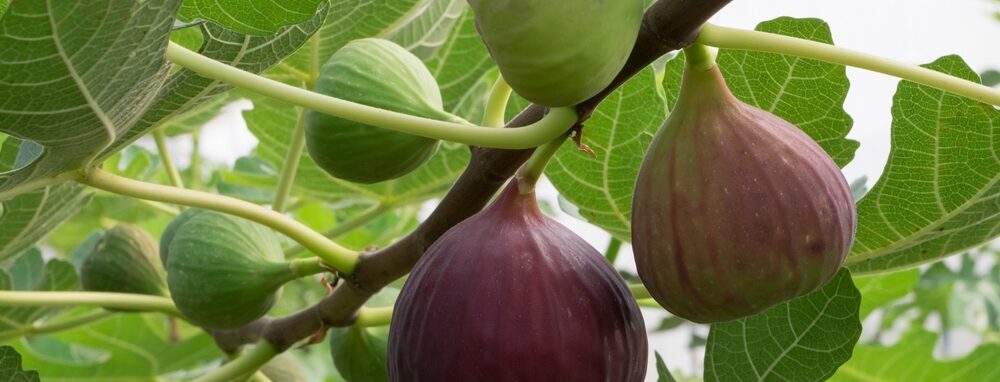
A Pruning Guide for the Fig Tree: When, Why & How?
Want to enjoy a great crop of figs each year? Then get to work, because pruning fig trees boosts growth and fruit! A step-by-step guide.
🌱 All important maintenance moments for your lawn during the year. Leave your email and we will send you the lawn calendar for free.
Enter your email
Receive the lawn calendar in the mail
Enjoy a green lawn all year round!

- Order by 2PM = shipped today
- 250.000+ satisfied customers!
- 60 day satisfaction guarantee
Does your fig tree refuse to produce fruit? Maybe the fruits appear, but they rot before they ripen. Perhaps your tree has grown spindly and bare? It’s time for pruning fig trees, people!
- Why prune a fig tree?
- When should I prune my fig tree?
- When to avoid pruning your fig tree
- Tools to use when pruning your fig tree
- A step-by-step guide to pruning fig trees
- Top tips for summer pruning
- Protect your fig tree from frost
- Common mistakes made when pruning fig trees
- FAQs
Fresh figs are sweet and delicious. And it’s pretty tricky to find them in your typical supermarket. So, pruning your fig tree is the surest way of getting a regular crop of these exotic delicacies.
Luckily, pruning a fig tree is relatively simple, and that’s what we will explore in this article. So, put your feet up and learn everything there is to know about pruning fig trees.
Ready? Let’s get started.
Why prune a fig tree?
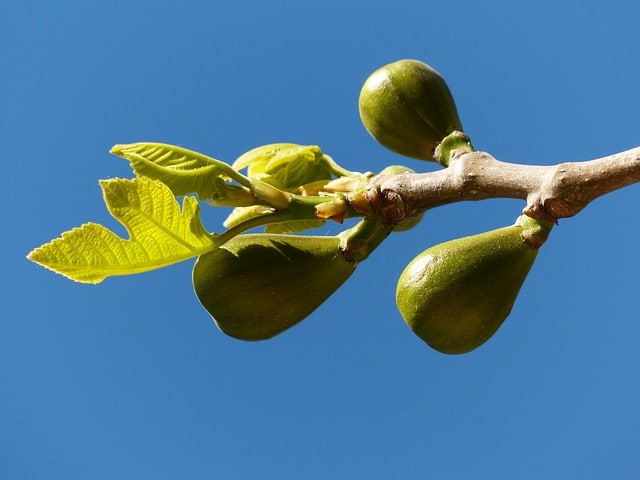
The principal reason for pruning a fig tree is to stimulate growth. When you cut back spindly, weak branches, the tree focuses its energy on producing new shoots and branches, ultimately resulting in a higher yield of figs.
Additionally, removing dead, weak, or damaged wood helps keep the tree healthy and robust, protecting it from pests and diseases.
Finally, pruning your fig tree helps maintain a good shape. This is especially important for smaller gardens because fig trees can grow large, proliferating in the summer.
When should I prune my fig tree?
The optimal time for pruning fig trees is in late autumn or early winter — November to January — while the plant is dormant. Make sure to cut the branches back before new buds appear, giving the tree plenty of recovery time before the growing season begins again in the spring.
A fig tree can live between 50 and 100 years in the right conditions, although some are believed to have lived for centuries! They react very well to pruning — you can even hard prune an overgrown tree, and its regrowth will be particularly vigorous.
When to avoid pruning your fig tree
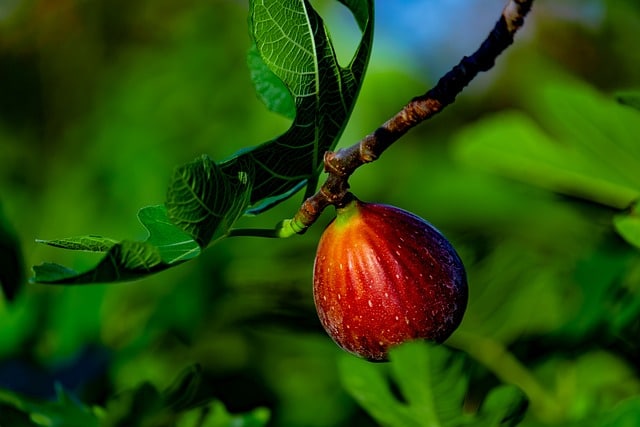
Never prune your fig tree in spring after it has woken up from its winter dormancy. This is because the tree produces more sap, and the cut branches can “bleed”, which could cause the branches or leaves to sag. Or the tree could even die.
Also, avoid pruning during frost or heavy rain — these conditions will prevent the cut wounds from healing, leaving the tree susceptible to disease.
Tools to use when pruning your fig tree
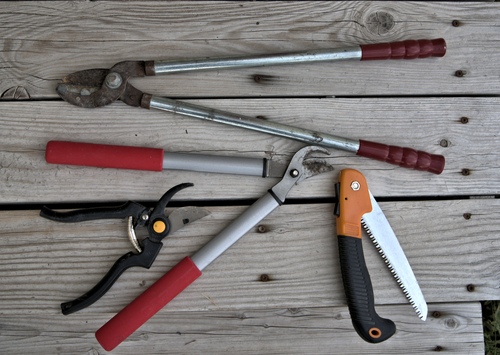
Like all trees, some branches can be tricky to remove. So, have clean tools at hand (and don’t forget to clean them after pruning to prevent spreading disease around your garden plants.
We recommend the following tools:
- Pruning shears — sharp pruning shears are helpful for thin branches and dead wood
- Branch shears — for thicker branches
- Pruning saw — for larger branches close to the main trunk
- Garden gloves — these protect your hands from sharp branches and sticky sap (which can be allergenic)
- Safety goggles — to protect your eyes, especially while sawing.
A step-by-step guide to pruning fig trees
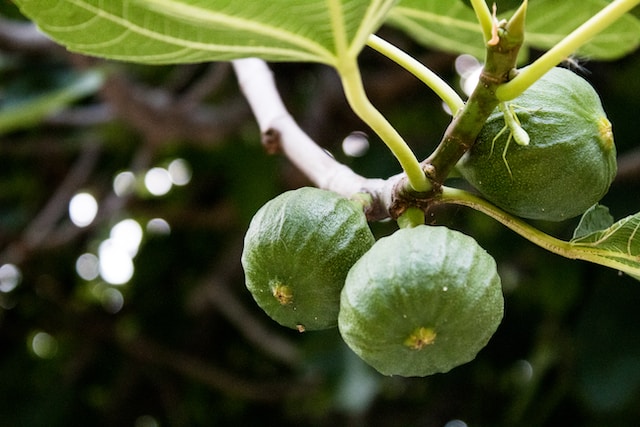
Step #1: Inspect the tree
Try stepping away from the tree to assess its shape and size. Identify the dead, damaged, or diseased branches — these can affect the tree’s vitality, so should be your prime target.
Step #2: Aim for an open branch system
Aim to create an open framework, removing branches that rub together or intersect — these prevent air from circulating around the foliage and can promote disease.
Prune the oldest branches back to the base, leaving 2.5cm stubs, helping the tree channel its energy into producing new shoots and branches.
However, retain shoots bearing fruitlets at the tip if possible.
Step #3: Assess the shape
Step back again and assess the remaining shape after cutting the dead and diseased wood away. Now it’s time to even things out, cutting back for aesthetics.
Cut thick stems of more than 3cm in diameter with a pruning saw, cutting on the pull stroke to prevent damaging the tree.
Step #4: Pruning side branches
Cut the side branches to around 3 to 4 buds from the main branch to stimulate new growth.
Step #5: Aftercare
After pruning, it’s vital to water and feed the tree to help it recover from the stress of cutting. And don’t forget to cut back surrounding bushes and trees to ensure your fig tree has plenty of sunlight.
Top tips for summer pruning
It’s best to avoid pruning during the summer. But if you must cut it back, choose a cloudy day to prevent the wounds from being exposed to the sun, which will dry them out.
Cut back minimally, saving the more significant pruning for the winter.
Protect your fig tree from frost
Fig trees are Mediterranean in origin, so they don’t enjoy harsh British winters. In fact, over-exposure to frost and ice can inhibit fruit production the following year.
So, cover your tree with a blanket or horticultural fleece when the temperature drops below zero.
Common mistakes made when pruning fig trees
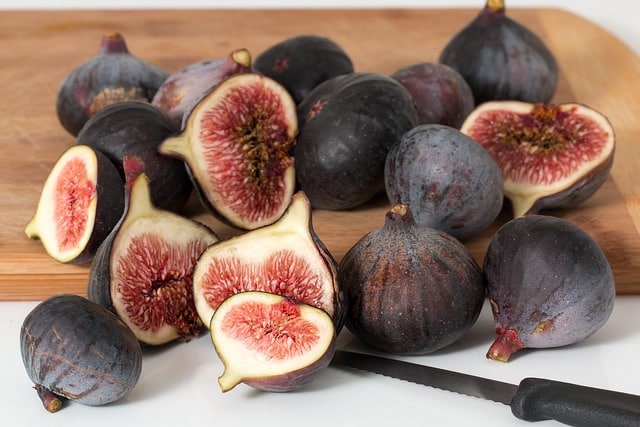
Although pruning a fig is relatively straightforward, damaging the tree is possible. So, avoid these common mistakes:
- Excessive pruning — over-pruning will hinder growth and fruiting. Cut back moderately.
- Pruning at the wrong time — wait until winter for best results. Pruning too hard during the growing season can inhibit the tree’s growth.
- Insufficient care after pruning — use pruning balm and give your tree plenty of water and fertiliser to help it rejuvenate after cutting back.
FAQs
Wait until the tree is dormant from November to January before pruning. Avoid pruning a fig tree during the growing season — it can inhibit growth and affect fruit production.
Remove intersecting branches and dead or diseased wood. Create an open branch network to facilitate better air circulation, and prune side branches back to 3 to 4 buds from the main branch.
Fig trees originate from the Mediterranean, so they’re not great in freezing temperatures. In fact, over-exposure to frost can inhibit fruit production the following year. So, cover your fig tree with a horticultural fleece or blanket to help it survive a frosty snap.
Any questions?
We hope our guide to pruning fig trees has provided all the info you need. Want to learn more on the art of pruning?
And if you have any questions, drop us an email, and we’ll reply as soon as possible.
Happy gardening!
-
Orchids: A Complete Guide on How to Care for ThemWant to give your orchid the best possible care? Discover essential tips from placement to watering and pruning. Learn everything you need to know!Read more
-
Growing Wisteria Made Simple: From Planting to Perfect BloomsWith blossoms like a purple waterfall, Wisteria sets an almost magical and colourful mood. If you want to grow this beauty in your garden, you’ll need a bit of patience. Don’t worry, it will most definitely pay off.Read more
-
How to Build a DIY Greenhouse: A Practical Guide for Smart SpendersImagine extending your growing season throughout the year, nurturing tender plants regardless of the weather, and creating a personal garden sanctuary. This is precisely what a DIY greenhouse offers you. Let’s learn how to build one.Read more
-
How to Grow Eucalyptus in British GardensWith a little love and care, eucalyptus trees can thrive in English gardens. Since they don’t germinate well without proper help, there are not considered invasive. So, there is no reason not to plant them if you enjoy their looks.Read more
-
Transform Your Garden with All-Year-Round Flowering PlantsDid you know you can enjoy blooming flowers even in January? With the right selection of all year round plants, there’s no need to wait until spring to add some colour to your garden.Read more
-
How to Create a Butterfly Garden: A Simple Guide for British GardensThe UK's butterfly population includes 59 different species. These beautiful winged creatures face a steady decline because of habitat loss, pollution and changing weather patterns. Your garden can become a vital link between nature reserves and natural habitats. Let’s explore how.Read more
-
Volcanic Rock Dust for Your Garden—Application and TipsDid you know that volcanic rock dust is a brilliant organic soil improver? This article explains exactly what it's good for and how to use it properly.Read more
-
How to Use Landscape Fabric ProperlyIf weeds or erosion in your garden are troubling you, landscape fabric might be the solution. We’ll explain how and when to use it properly, just keep on reading.Read more
Leave a comment
Your answer will be displayed on the site and the interested party will be notified by email.
Leave a comment
Have a question or want to share your experience? Leave us a comment.

- Order by 2PM = shipped today
- 250.000+ satisfied customers!
- 60 day satisfaction guarantee

- Order by 2PM = shipped today
- 250.000+ satisfied customers!
- 60 day satisfaction guarantee

🌱 All important maintenance moments for your lawn during the year. Leave your email and we will send you the lawn calendar for free.
Enter your email
Receive the lawn calendar in the mail
Enjoy a green lawn all year round!






















Comments (0)
There are no comments yet. Well then, what are you waiting for to
Be the first to write your comment!inaugurate this pretty page?
Do you have some comments?